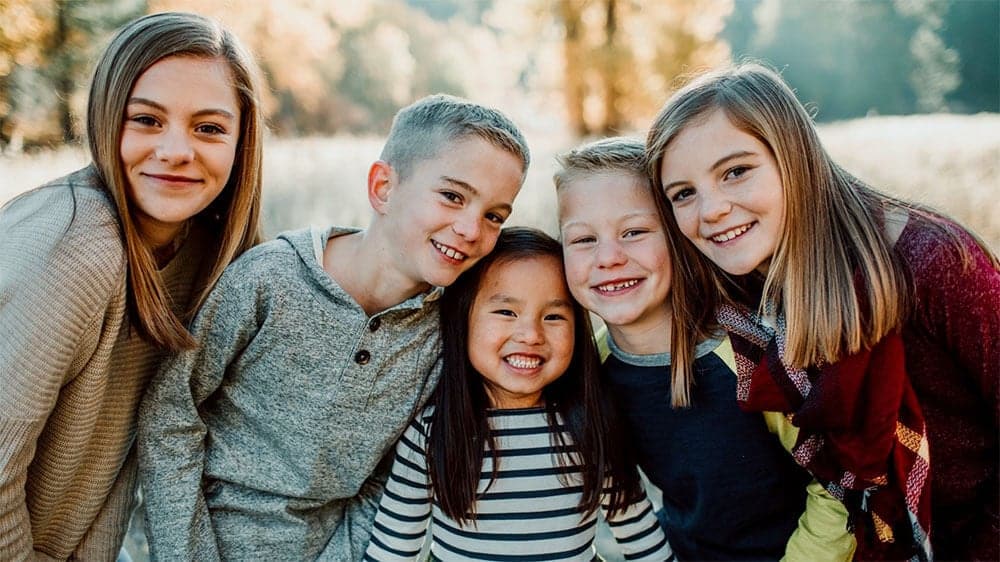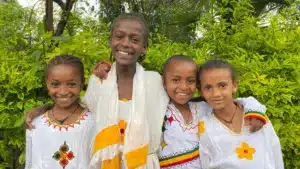
At AGCI, we recognize the true importance of finding families for kids, not kids for families. It’s our greatest joy to put a child’s needs at the forefront of our efforts in advocating for them, and a true privilege to learn about and honor their stories, their needs, and what they will need to thrive in the long-term. We recognize that adoption might not always be the answer, nor is everyone in a place to adopt a waiting child. But the fact is that everyone can help a waiting child thrive.
We’re here to redefine the stories of waiting children, so that they would no longer be marked by years of trauma, waiting in an institution, but rather marked by a story of healing, love, and hope.
What Does it Mean to Be a Waiting Child?
When a child comes into care in Bulgaria, for example, first they will reach out to a lot of the relatives to see if they will take full custody of the child. If that doesn’t work, then they will reach out to domestic families because, why not give this opportunity for the child to stay in their own country? It would be in their best interest. If they do not find any domestic families who are interested in adopting the child, then they enter them in the international registry for adoption. This process is in line with the Hague Convention—a treaty that regulates adoption processes to ensure children being adopted are legally orphans and limit instances of unethical adoptions. While valuable, it requires a lot of time and effort during which children are waiting in care. This means that some children come into care at age 2 but must wait until they are 4 or 5 years old to become eligible for international adoption. The process itself makes these children harder to place because many families initially feel called to adopt healthy infants. For these children waiting to find their forever family, sharing their story is the only way.
Every Child Has a Story
All our kids from China are abandoned. They’re found out on the streets, near a train station or in front of the orphanage, or a fire station, or a police station. And they’re always found in a basket or wrapped in a blanket. And I always wonder, how long were they out there until somebody noticed them? In the middle of winter, how long were they out in the cold? Were they out there for five minutes? Were they out there for an hour? And in the middle of summer, it’s hot in these countries so how long were they out in the heat? I also wonder, were the birth families hiding somewhere behind a building or behind a tree to see if somebody would pick them up? That’s where my brain goes. I always want to know how they came into care and that allows me to understand their history and their background. And I want our families to understand that before they dive into needs. Because understanding their background will help you understand their needs. It will allow you to see they came in with nothing. They started their life being abandoned with nothing. And now they are institutionalized. And some institutions provide elevated care, and some don’t. But through all of that, they’re able to overcome obstacles. I want to share that with families. “This is what they can do. This is what they have accomplished, even with limited resources. So, imagine what they could do when they’re home, when they’re under that roof, when they’re with mom, dad, siblings, and all the medical resources that we have here in the United States?” I want families to focus on the potential and see what children could become once they’re home.
A Well of Inspiration
A few years back, my coworkers and I went to Colombia, and we visited a home called Luz y Vida where we came across a 7-year-old boy we’ll call Joshua. When our team first met this amazing little boy, he was 7 years old, living in an institution in Colombia. Joshua was in a wheelchair and needed supplemental oxygen. He had been diagnosed with a heart and lung condition that doctors believed would prevent him from living into adulthood and was in an institution that cares for those with the most severe special needs. He had a heart surgery that was completed too late, but despite his circumstances, he was always pushing his own limits! Doctors did not believe Joshua would ever walk, talk, or even communicate—but there he was already doing all those things when we met! We quickly recognized the potential of this sweet boy—he was so bright, charming, and so dedicated to learning and building new skills. During our visit, he brightened up immensely each time he saw our team. From walking to just about running, it was hard to keep up with him! He was quick to soak up all the time he had with us and clearly connected with anyone who crossed his path. His story spoke volumes of potential and it became clear that we didn’t truly know what his potential was, only God did. We came back ever more motivated, and we spent weeks and months trying to find the right family for him. It’s a little potential like that that inspires me to advocate more for these children because they deserve a chance. They just need one tiny chance for to thrive. And guess what? Joshua’s home. He’s got three siblings, two brothers and a sister, and he’s doing well.
The Need
As wait times have increased for children in care, we’ve seen so many families who understand that the process is not the child’s fault. They tell us, “Yes, it would have been great if they had come home at age 2 but they’re 5. That’s okay. They still deserve a family. We still want to bring them home.” We’re seeing so many families who are open to older children, siblings, or kids with special needs because they all deserve families. There are so many siblings waiting for their forever families and unfortunately, some countries do separate them thinking that it’ll give them a better chance to be adopted, but I’ve got two younger sisters and I cannot imagine being separated from them so the goal is to find families that will adopt them together. There are so many older children, some at the cusp of aging out, who haven’t had a chance to heal from the trauma they’ve experienced and won’t have the resources they’ll need to support themselves alone. And there are so many children with complex special needs who could thrive if they had access to the care they deserve. I’m praying and hoping that families will open up their hearts even more for these waiting children. We receive their photo and basic information from all over the world every day and I will continue to share their stories and educate families willing to walk the journey with them.
Every child deserves to thrive. Providing opportunities like that for children to connect with those around them and giving them a platform to tell their story is at the heart of not only this waiting child initiative, but how we are called to love one another. We are so blessed with the opportunity to do this together as a team at AGCI by lifting these children up, providing them with a voice, and advocating for their potential and how far they come. We want to keep sharing their beautiful stories of hope. If you would like to learn about more of the stories that inspired this initiative, as well as how you can be a part of the journey of a waiting child, go to www.allgodschildren.org/waiting. If you have questions about AGCI’s waiting child program and would like to learn more, please email inquiry@allgodschildren.org.













